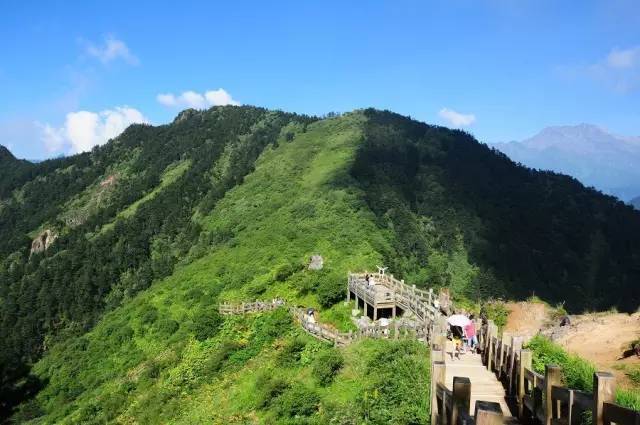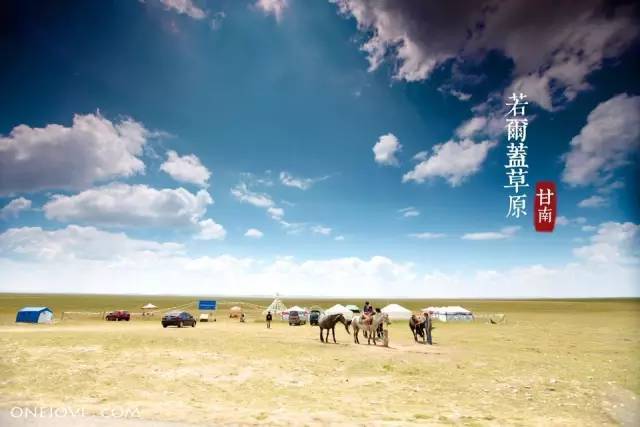Niubei Mountain
Niubei Mountain is named for its peak, where a large rock juts out resembling a bull's head, and its ridge, which is long and thin like a bull's back. It is known as 'China's largest viewing platform.' The sea of clouds at Niubei Mountain is dense and even, vast and gentle, with ubiquitous cloud waterfalls reminiscent of the 'Hallelujah Mountains' in Avatar, giving the feeling of walking in the sky. From the summit, one can not only see the full view of the King of Sichuan Mountains but also take in the famous peaks of Emei Mountain, Siguniang Mountain, and Erlang Mountain. On a lucky day, you might even witness the golden sunlight on the mountains. Accommodation on Niubei Mountain is relatively convenient, with many large tents set up by Tibetan people available for lodging, though conditions on the mountain are relatively harsh. Before heading to Niubei Mountain, be sure to check with the inns about the possibility of driving up the mountain. If there is snow or ice on the road at the summit, cars will stop at 'Yunhai Renjia,' and you will need to hike for 2-3 hours to reach the top.
Daocheng Yading
To reach the Yading Scenic Area, you need to hire a car from Daocheng County, and it can only take you to Riwa Township. From Riwa to Yading Village, you need to switch to the scenic area's shuttle bus. The journey from Daocheng to Riwa takes about one and a half hours, and from Riwa to Yading Village also takes about one and a half hours. The round-trip fare from Daocheng to Riwa is 400-700 yuan per car, and if you share the car, it costs about 50 yuan per person.
Xiling Snow Mountain
World Natural Heritage, Giant Panda Habitat, National Scenic Area, National Forest Park, AAAA-level Tourist Attraction. The highest peak in the scenic area, Daxuetang, has an altitude of 5364 meters and is covered with snow all year round, making it the highest peak in Chengdu. The famous Tang Dynasty poet Du Fu praised the beauty of Xiling, writing 'The window contains the thousand-year-old snow of Xiling,' which gave Xiling Snow Mountain its name. In addition to the ski resort, the scenic area also offers more than 10 ice and snow entertainment projects such as snowmobiles and dog sledding. Xiling Snow Mountain is divided into the front mountain and the back mountain, usually referring to the back mountain, which is superior in both scenery and leisure activities.
Xinduqiao
Xinduqiao, at an altitude of about 3300 meters, does not have prominent landmark scenery, but the 10-kilometer stretch along the route is known as the 'Photographer's Corridor.' It is located at the fork of the southern and northern routes of National Highway 318; the rolling mountains, scattered Tibetan villages, and the beautiful plains of western Sichuan are breathtaking. Tibetan-style houses are very distinctive, with spacious white-walled courtyards and vermilion gates. The window eaves are painted with red, black, and white colors, depicting sun, moon, or triangular patterns symbolizing prosperity and abundant harvests. Since the scenery of Xinduqiao is along the way, especially the section from Zheduo Mountain to Xinduqiao and from Xinduqiao to Tagong, it is recommended to hire a car for a self-guided tour so you can stop at any time.
Ruoergai
From Ruoergai County Bus Station, there are daily buses to Lanzhou, Hezuo, and Linxia that pass by Huahu Lake; you can also charter a car from Ruoergai County, which is about 40 kilometers in total and costs around 500 yuan. You can visit the First Bend of the Yellow River along the way.
Mount Emei
Mount Emei is a famous Buddhist mountain and the bodhimanda of Samantabhadra. The numerous temples in the mountain fill the area with a strong Buddhist atmosphere. The scenery in the mountain is extremely beautiful, with different attractions in each season. The mountain is divided into three zones: low, middle, and high, based on altitude. From the summit, known as the Golden Summit, you can enjoy a wide and magnificent view, with a sense of overlooking all other mountains. Watching the sunrise and the sea of clouds are popular activities. Sometimes, folk activities are also held. The temperature difference is significant after reaching the summit, so it is recommended to bring warm clothing.
Mount Siguniang
Mount Siguniang is the highest peak of the Qionglai Mountains on the eastern edge of the Hengduan Mountains. It consists of four continuous peaks, which from north to south are 6250 meters, 5664 meters, 5454 meters, and 5355 meters high respectively. The high altitude may cause altitude sickness. These four peaks are covered with snow all year round, standing like four maidens with white veils over their heads, towering above the two valleys of Changpinggou and Haizigou. Mount Siguniang has always been a paradise for hiking enthusiasts. The trail from the entrance of Changpinggou to the entrance of Bipenggou is about 70 kilometers long. The canyon path is rugged and narrow, with waterfalls and streams from melting glaciers slowly flowing through. Beyond the valley, there are wide alpine meadows filled with flowers, offering very gentle and beautiful scenery. When visiting Mount Siguniang, don't miss the beautiful autumn scenery of Jiajin Haizi Lake, the 2000-year-old Lama Temple, and be sure to visit the adorable giant pandas in Wolong along the way.

















